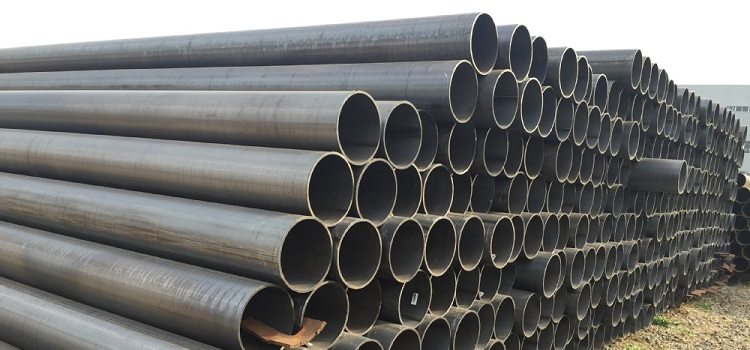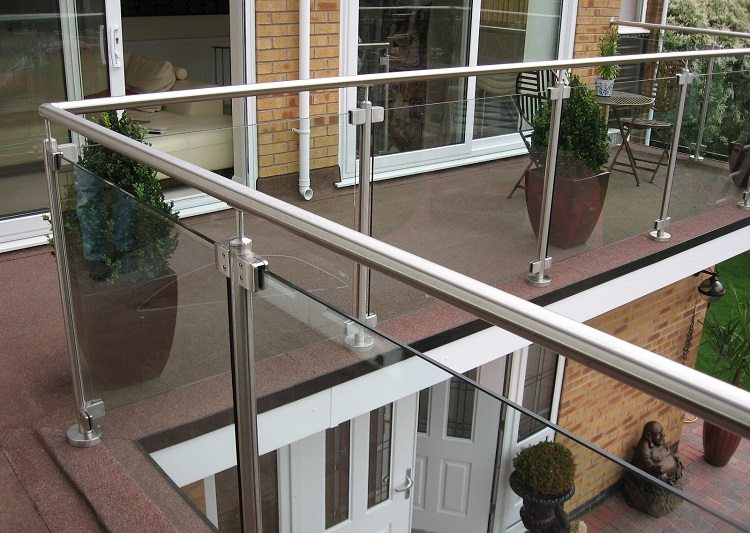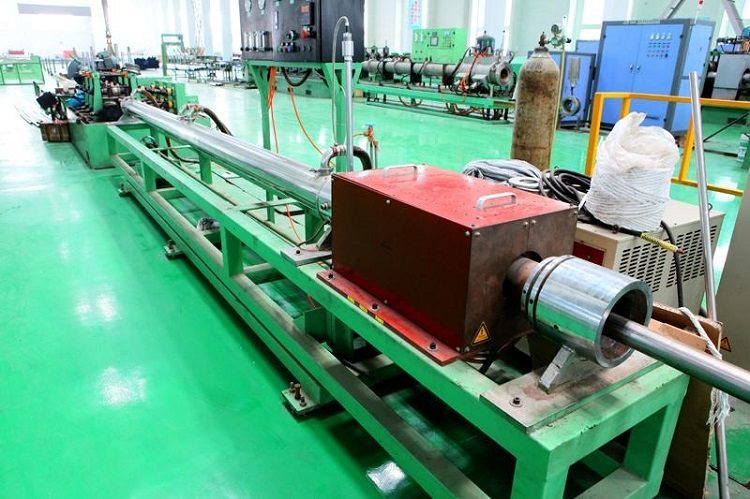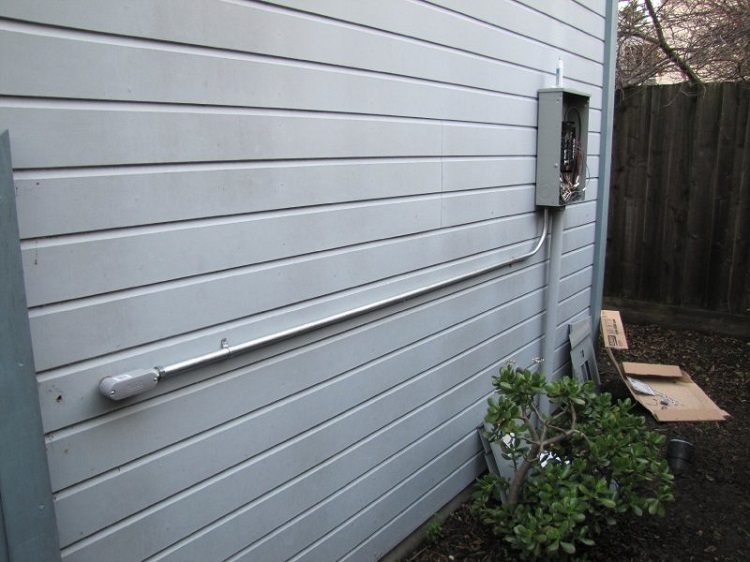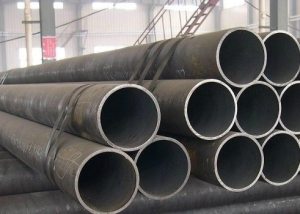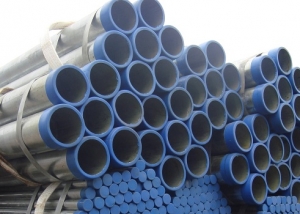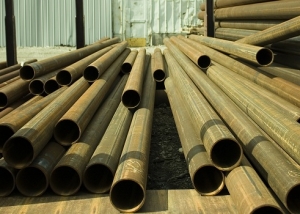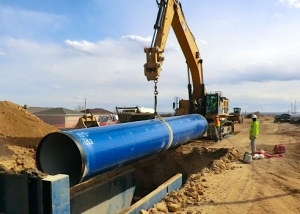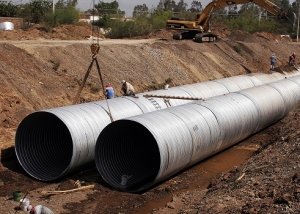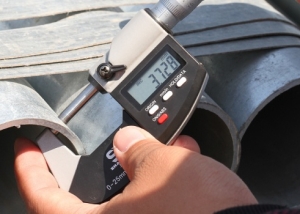A steel pipe with a wall thickness not exceeding 1.5 mm is referred to non-standard metal rolling. Products of this type are difficult to manufacture, however, due to the small diameter, the use of such products makes it possible to solve highly specialized specific tasks. And in some cases, an alternative to a thin-walled pipe may simply not be found.
Content
The use of thin-walled pipes
A few words about the specifics of products of this type. As far as technical products are concerned, their definition should contain numbers, and not a subjective assessment of belonging to a particular class. So: the assortment of steel thin-walled pipes includes products with a wall thickness of not more than 1.5 millimeters, or if the coefficient value is determined by the formula
K = Dvn / Sst., Where
Ext. - outer diameter, and S Art. - wall thickness, lies in the range of 12.5 ... 40.
As a good example of the use of thin-walled metal products can be called pneumatic and hydraulic drive systems in the automotive industry, aviation and shipbuilding.
Of course, the above scope of thin-walled steel pipes is far from the only one. They can be found in such industries as:
- building;
- housing and communal services sector;
- furniture manufacturing;
- boiler plants of energy enterprises.
In everyday life, these products are also not uncommon. But here they are most often used when engineering communications should have moderate strength, sufficient to withstand only low loads. This, in this case, is primarily a thin-walled steel pipe for electrical wiring.
Steel pipe production
Depending on the production method, there are three types of thin-walled steel pipe products:
- cold-deformed seamless;
- hot-deformed seamless;
- electric welded.
Each of the species has its own characteristics, which affect the strength and the possibility of their use in a particular industry.
Cold-deformed seamless pipes (GOST 8734-75). The manufacturing process for products of this type is practically the same as in the case described above. The main ones are the following two differences:
- The stitched sleeve is cooled and passes through all the rollers, having a relatively low temperature.
- At the final stage, heat treatment is carried out. Thus, by eliminating the stress in the metal, which always occurs during cold deformation, the steel acquires elasticity and toughness. After that, re-calibration with rollers is performed.
Electric-welded pipes. They are produced according to GOST 10704 from a steel flat sheet, which is unwound from a roll, and then cut into strips of small width. At the next stage, the sheets are welded into an endless ribbon. The workpiece thus obtained is fed to an automatic welding machine. The welding procedure is carried out mainly in two ways:
- high-frequency induction currents according to the so-called HF technology;
- inert welding with an electric arc is already TIG technology.
Note! When purchasing thin-walled metal pipes, you will most likely be offered products manufactured by the HF method. TIG seam is considered more durable. However, in those areas where a very reliable thin wall of small diameter is required, seamless pipe rolling should be preferred.
After cooling, the workpiece undergoes flaw detection. At this stage, quality control is carried out, as well as the tightness of the seam. The dimensions required by GOST are provided by calibration on rollers.
Hot-deformed seamless pipes. The production of products of this type is governed by the requirements of GOST 8732-78.
- the workpiece is a monolithic steel cylinder. First, the rod (this is another name for the cylindrical billet) is sent to the furnace, where it is heated to the temperature of recrystallization of the metal;
- then a plastic cylinder is formed from plastic steel on the piercing press, a hollow cylinder inside — a sleeve that differs in the wrong size and shape;
- having passed a series of rollers, the workpiece acquires the diameter and the desired wall thickness determined by the assortment. After calibration, the cooled pipe is cut into pieces of the required length and packaged.
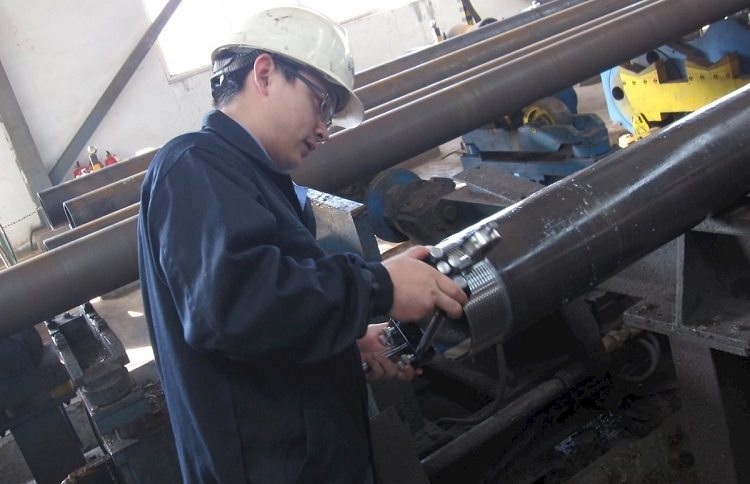
Finished pipes pass control, including visual inspection, as well as measurements with special instruments and tools
It should be noted that when passing through the rollers inside the pipe there is a mandrel.
Technical characteristics of thin-walled steel pipe
The weight of this product is the main factor on the basis of which its price is calculated. In addition to the assortment, GOSTs contain mass tables for one linear meter of a thin-walled steel pipe depending on the wall thickness and diameter. You can get an idea of the relationship between these characteristics of such parts by examining the table below. It contains sample data relating only to some standard sizes of cold-formed products.
Table 1
| Outer diameter millimeters | The estimated mass of 1 linear meter of a thin-walled pipe (kilograms) with a wall thickness (millimeters) | |||||
| 1,50 | 1,40 | 1,20 | 1,0 | 0,8 | 0,6 | |
| 40 | 1,42 | 1,33 | 1,148 | 0,962 | 0,773 | 0,583 |
| 35 | 1,24 | 1,16 | 1,00 | 0,838 | 0,675 | 0,509 |
| 30 | 1,054 | 0,987 | 0,85 | 0,72 | 0,58 | 0,435 |
| 25 | 0,87 | 0,82 | 0,704 | 0,59 | 0,48 | 0,361 |
| 20 | 0,68 | 0,64 | 0,56 | 0,47 | 0,38 | 0,29 |
| 15 | 0,499 | 0,47 | 0,41 | 0,34 | 0,28 | 0,21 |
| 10 | 0,314 | 0,30 | 0,26 | 0,22 | 0,18 | 0,14 |
| 5 | 0,129 | 0,12 | 0,11 | 0,099 | 0,083 | 0,065 |
The selection of these metal products should be based on the specifics of the intended use.
Thin-walled pipes for electrical wiring
When buying a thin-walled steel pipe for electrical wiring, it is necessary to evaluate whether its diameter will be sufficient to ensure that all cables are laid so that their insulating shells are not overly compacted. Pay attention also to its inner surface. Protruding welds and burrs should not be present on it and, in general, it should be smooth.
Important! Use of such products is allowed only where other types of protection of electrical wiring from mechanical damage are prohibited, for example, in explosive rooms. However, they can not be laid in the ground, in outdoor installations, in rooms with aggressive environments, wet and especially damp.
It is necessary to carry out installation in compliance with the following basic requirements:
- do turns and bends of the cable channel so as to prevent a break in the wiring;
- in order to minimize the risk of corrosion, place pipes with a slope, even small, towards the distribution switchboard.
However, in this case, the main thing is to ensure electrical safety. Due to the good electrical conductivity of steel, be sure to ground the channels and carefully monitor the state of insulation of the electrical wiring.
In conclusion, it should be said that smooth corrugated polymer pipes are a worthy alternative to steel thin-walled products used for mechanical protection of cables.
